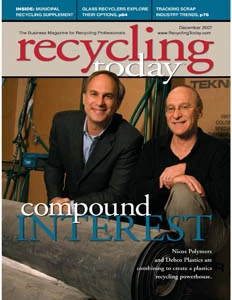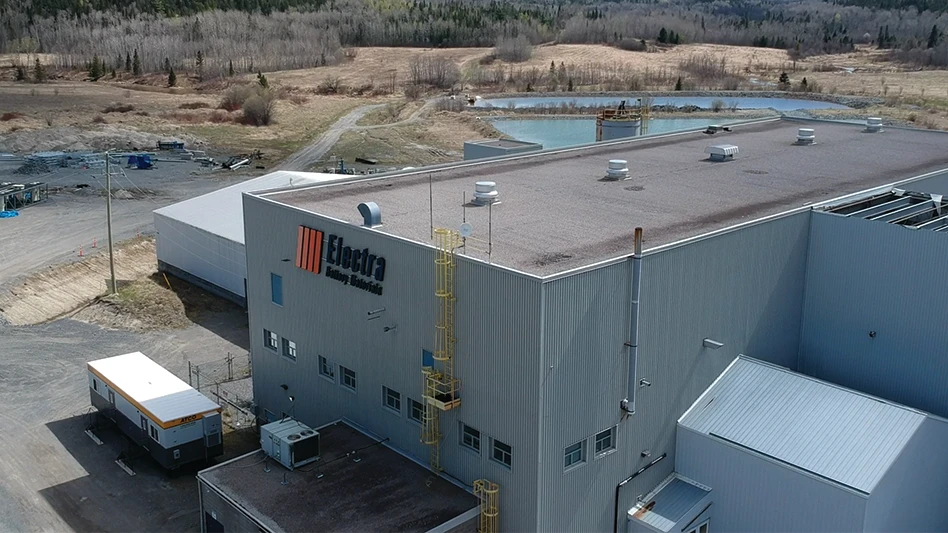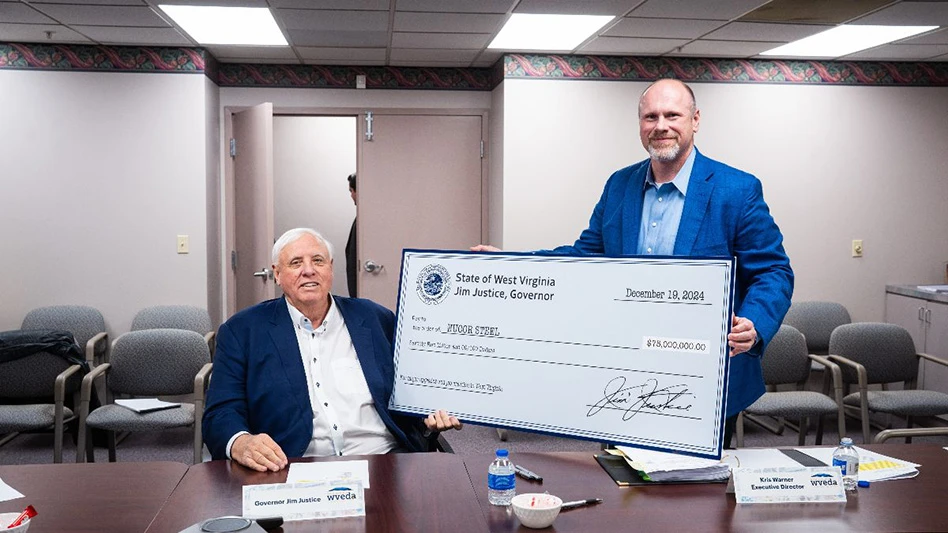The makers and designers of trailers and containers used by scrap recyclers are facing the same challenge that causes the automotive industry to spend millions of dollars in research: How do you make something that is light enough to save fuel and heavy-duty enough to be durable?
Scrap container and trailer fabricators, it is safe to say, do not have access to multi-million dollar research facilities, unlike automobile manufacturers.
But one can argue that their challenge is at least as great. In addition to fuel economy, Department of Transportation load limits are spurring on the need to cut down the weight of their products.
And much more so than the family sedan, a scrap trailer or container is bound to encounter severe job duties, therefore lightweight cannot also mean flimsy.
WATCHING ONE’S WEIGHT. The nation’s truck drivers and truck owners may well feel like a persecuted class of citizens.In an era full of legislatures that have promised not to raise taxes, the fees collected by highway patrols and state police for vehicle weight limit violations are escalating throughout the country.
Policy makers can argue that such stiff penalties are well deserved. Overloaded trucks can be a contributing factor to paved surfaces and bridge decks that face shortened life spans in light of their intense traffic loads.
For scrap haulers, the increased attention is unwelcome, but there may be ways to address the issue.
Jason Jurek, a third-generation officer of family business Ace Equipment Sales Inc., Cleveland, says his company is now focused on producing trailers that accommodate the seemingly contradictory notion of being lightweight and heavy-duty.
The company’s Web site says Ace is dedicated to producing innovative products that increase both payloads and durability.
Jurek says his he and his father Andy continually rethink design configurations and material specifications to work toward those two goals when producing trailers.
While older trailers may have been built with thick steel ranging from half an inch to 1-1/4 inches in thickness, "not all the steel is even one-half-inch-thick now," says Jurek.
Using three-dimensional design software that helps identify degrees of load-bearing resistance needed throughout a structure, Jurek has found that some larger parts can be light-weighted, while a handful of key components can be specified for increased thicknesses.
Titan Trailers Inc., Delphi, Ontario, Canada, has used this same philosophy in its Thinwall trailer.
The enclosed trailer features a heavy-duty steel Keith Walking Floor, but is enclosed with thin but sturdy aluminum sheet walls.
Companies like Ace, Titan, Maurer Mfg., Spencer, Iowa, and Benlee, Romulus, Mich., custom-make a wide variety of products for scrap recyclers and other market segments, such as solid waste haulers and demolition contractors.
Each company designs and makes products that address the complicated demand by scrap haulers for equipment that is lightweight but that can stand up to tough conditions.
DOWNSIZING. Greg Brown, president of Benlee, says his company and some of its largest customers have addressed the issue with the Super Mini Trailer.According to Brown, the Super Mini can carry the same 20-, 30- and 40-yard boxes that longer trailers can, but is "more maneuverable" and "gets into tighter spots" compared to many longer trailers.
Brown describes the Super Mini as a "robust roll-off trailer" that is 25-feet, 11-inches long and weighs only 13,000 pounds.
Each unit, though, is test loaded with a 60,000-pound box before it is painted and shipped and in most places can legally carry trailers as long as 50 feet and weighing 40,000 pounds or more.
Whether loading or unloading material or dropping off or picking up a box, truck drivers working in a scrap environment highly value maneuverability. Being able to keep a truck in forward gear and making one sharp turn instead of a series of small stabs at turning a corner can save an operator time and hassle throughout a work day.
Recyclers or haulers face a key shopping consideration when deciding whether to use roll-off trailers, specialty car haulers or configurations where the trailer is either attached to or separate from the chassis.
The 39-foot 3-Axle End-Dump Trailer from Titan Trailers has become the favorite of a British Columbia demolition hauler, the company’s Web site notes. The floor of the attached steel box can dip below the level of the trailer frame, allowing for a larger payload by volume.
Benlee offers a lengthy roster of scrap recycling companies that have purchased one or more models of its relatively new Super Mini, while Jurek at Ace Equipment lists prominent scrap recyclers, demolition contractors and steel mill service companies on his customer list.
Jurek says trailer buyers can also consider, for maneuverability, whether they want their units to be configured in an A-train or B-train format.
Ace Equipment is finding considerable interest in the B-train format, according to Jurek, because the units are more maneuverable and spread the carried weight out more evenly over the axles, which can help haulers comply with increasingly stringent bridge weight laws. (Likewise, Benlee touts the Super Mini as placing its axles near the rear of the trailer so users "get more ‘bridge’" with the product.)
State highway patrols and police departments are increasingly enforcing the U.S. Department of Transportation (DOT) Federal Bridge Gross Weight Formula for over-the-road truckers.
BRIDGE TO TROUBLE. The perils inherent in America’s aging highway infrastructure, as tragically brought to the forefront by this summer’s bridge collapse in Minnesota, have ensured that the enforcement of weight limits will remain a priority.In addition to measuring for maximum weight limits, however, enforcement officials can also measure specifically using the DOT’s bridge formula.
"The purpose of the federal bridge weight formula is to protect bridges on the Interstate System by controlling the number and spacing of truck axles," notes text from a U.S. DOT brochure on the formula.
"Compliance with [bridge formula] weight limits may require axle weights lower than the standard Interstate System weight limits of 20,000 pounds for a single axle and 34,000 pounds for a tandem axle set," the DOT also notes.
According to Jurek, his customers are telling him that traffic enforcement officers are increasingly deploying scales that allow them to check specific axle weights against this DOT formula.
LOOKING GOOD. A final piece of advice from trailer and container makers may sound a little self-serving, but it could be helpful all the way around.Jurek says when it comes to warding off the wrong kind of attention from enforcement officials, haulers can help themselves by avoiding a ramshackle appearance.
Achieving that look can involve a number of steps, including:
• Keeping containers clean and freshly painted to prevent rust from showing
• Deploying clear company signage can also prevent a "something to hide" appearance in the mind of an enforcement officer
• Using trailers that are rigid and flat, avoiding any appearance of a bend or dip in the metal
• Loading a container evenly so that weight is distributed evenly. This not only prevents bridge formula-related weight problems, but can avoid the appearance of a dip that could draw the attention of an enforcement officer.
Jurek says, "You want to look like you’re hauling feathers rather than hauling potentially over-the-limit scrap metal."
The self-serving portion of Jurek’s advice is that recyclers and the haulers who serve them can achieve these goals by working with vendors to keep their trailers and containers maintained and relatively youthful.
In the case of trailers, the age isn’t necessarily as important as the condition. Jurek says well-made trailers can last 20 to 30 years. As long as they are checked for structural soundness, users should get their money’s worth out of them.
Containers, on the other hand, "are designed to be destroyed" says Jurek—a painful acknowledgement coming from a third-generation equipment maker who takes pride in his work.
But after four or five years of tough work at scrap yards and demolition sites, the fabricated boxes are likely to turn into the types of containers that will attract unwanted attention from highway enforcement officers.
Business owners will have to do their own cost-benefit analyses, but unless they employ drivers who enjoy the hassles of being pulled over and inspected for weight limit violations, a nod toward cleanliness and sturdiness is likely to make sense.
The author is editor in chief of Recycling Today and can be contacted at btaylor@gie.net.

Explore the December 2007 Issue
Check out more from this issue and find your next story to read.
Latest from Recycling Today
- Sortera Technologies ‘owning and operating’ aluminum sorting solutions
- IDTechEx sees electric-powered construction equipment growth
- Global steel output recedes in November
- Fitch Ratings sees reasons for steel optimism in 2025
- P+PB adds new board members
- BlueScope, BHP & Rio Tinto select site for electric smelting furnace pilot plant
- Magnomer joins Canada Plastics Pact
- Out of touch with reality





